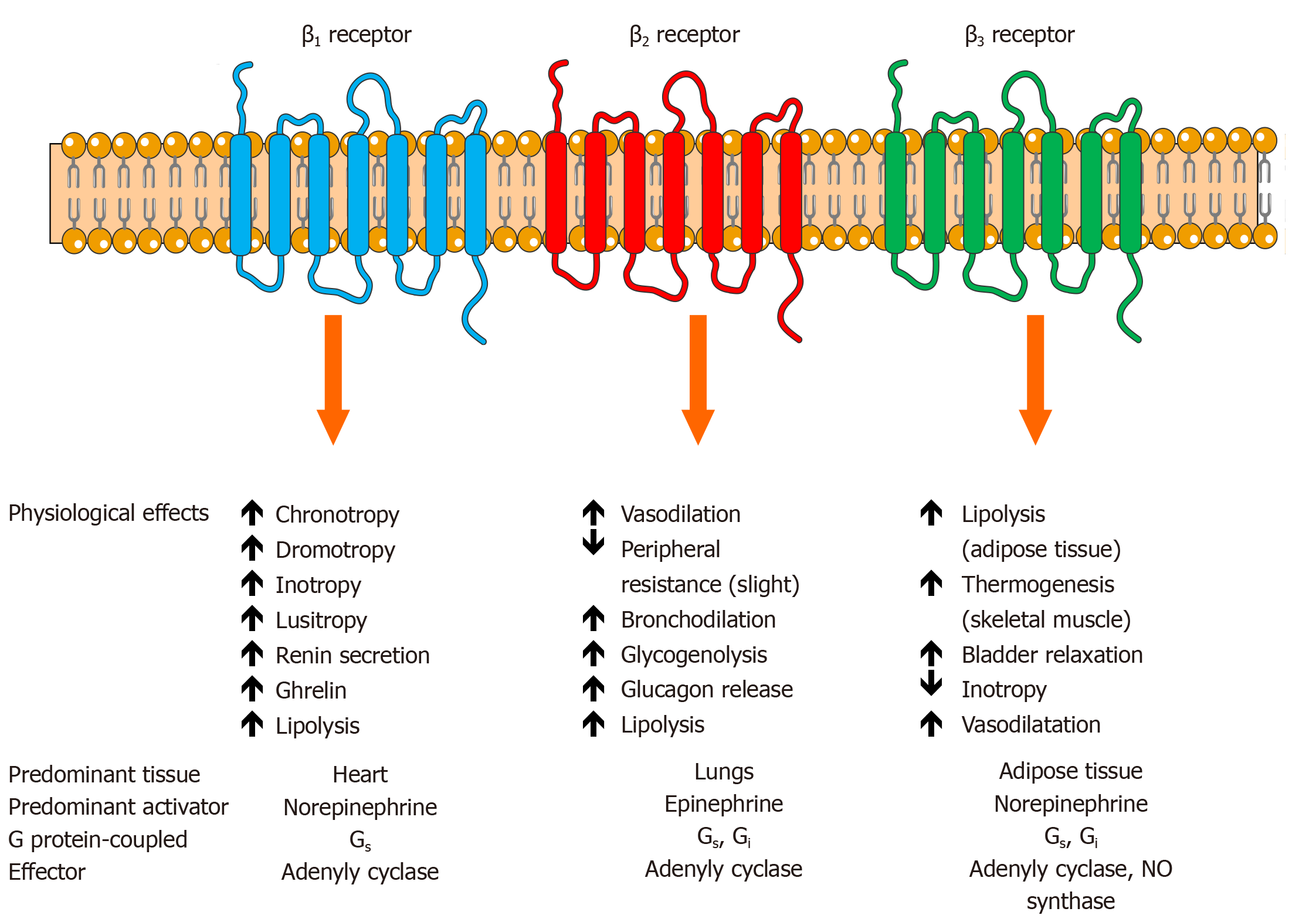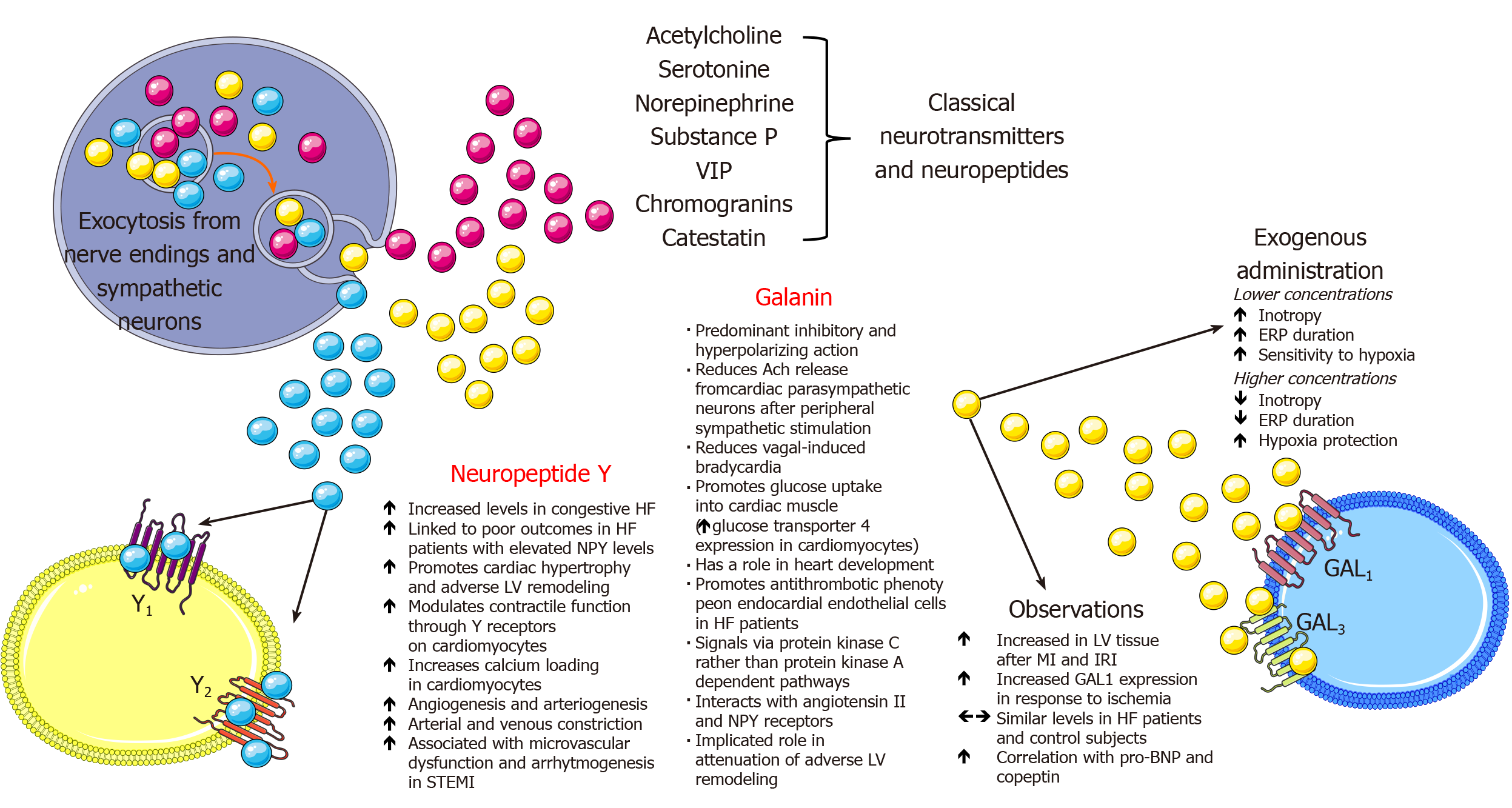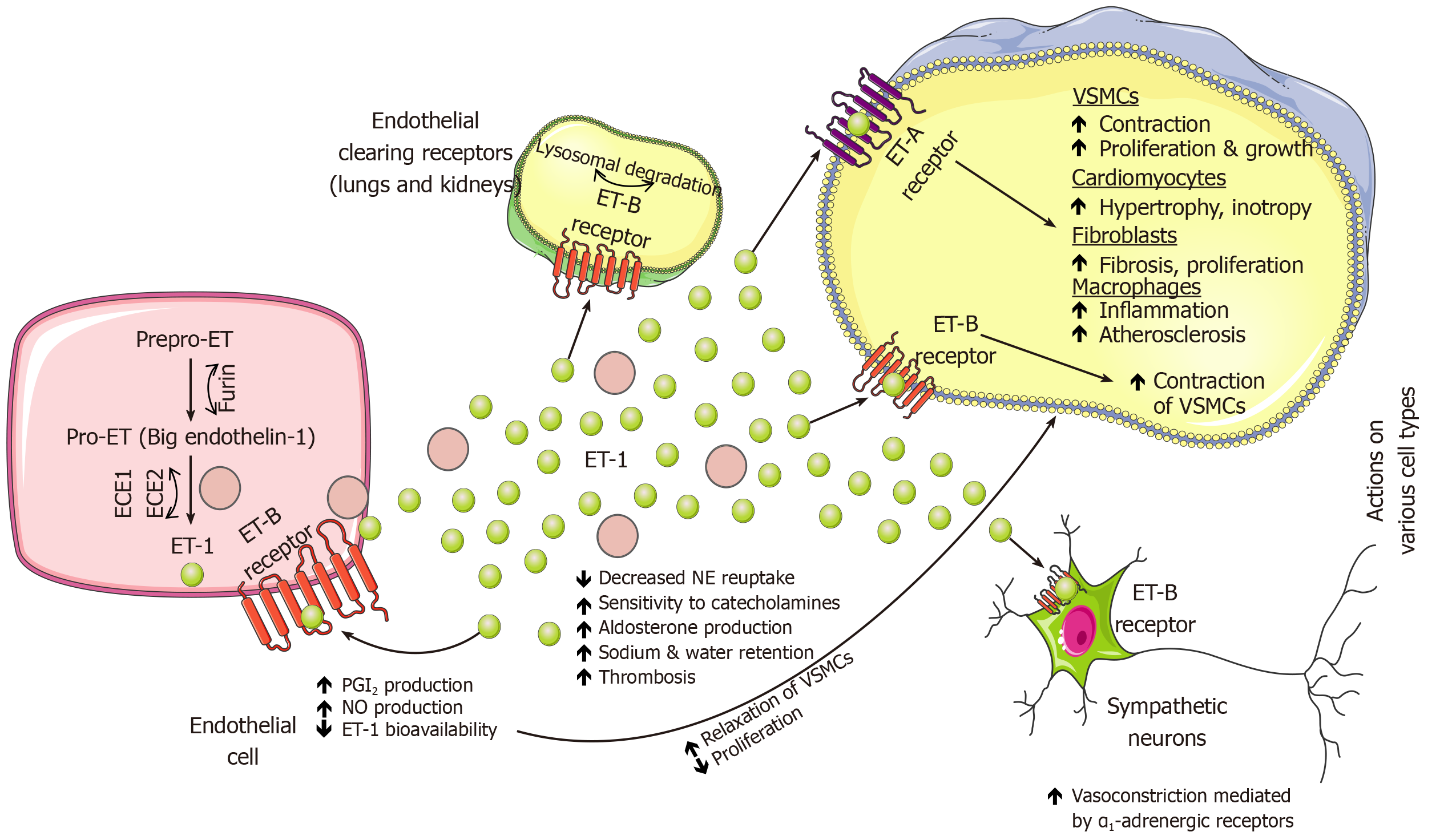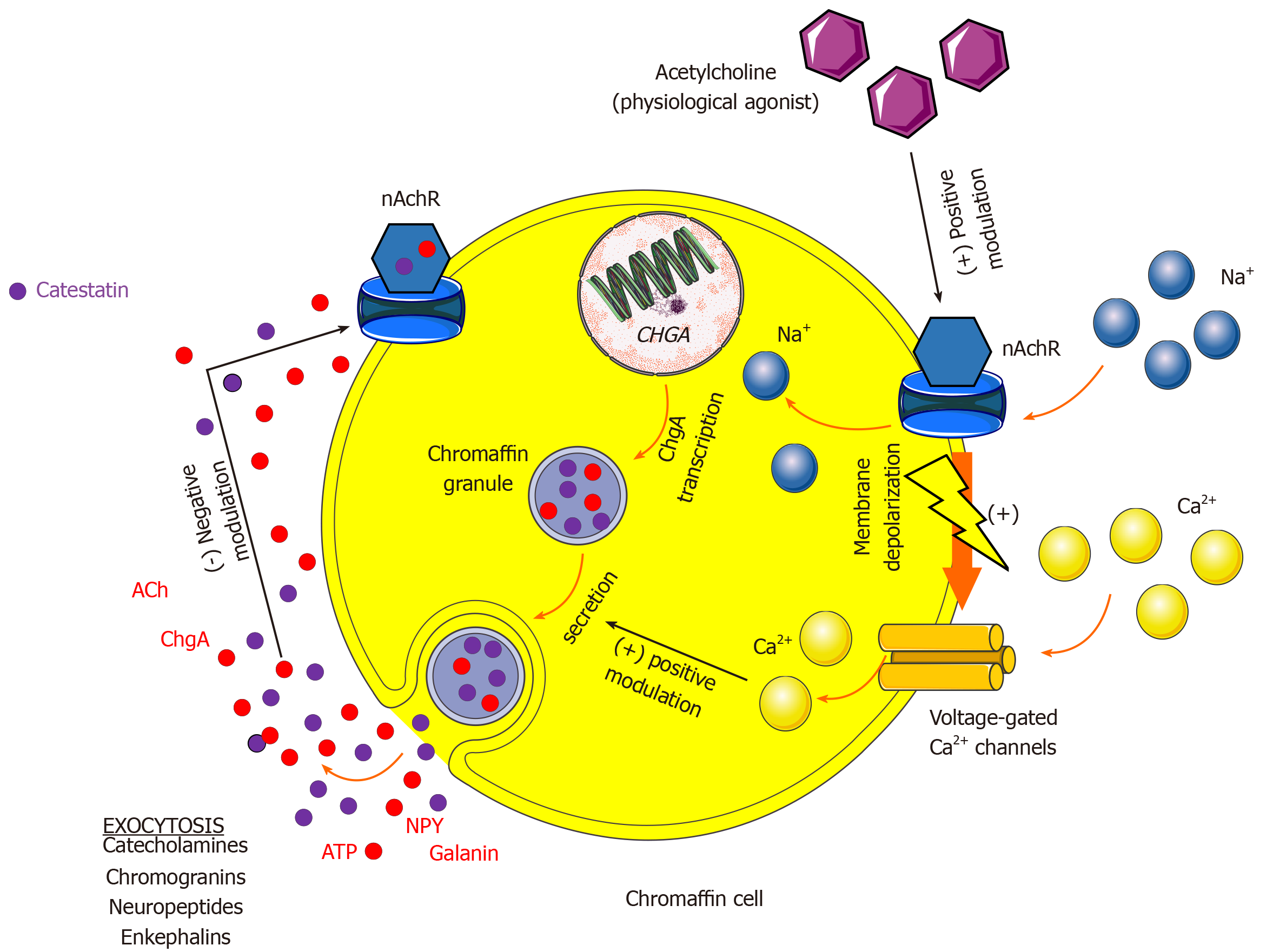Copyright
©The Author(s) 2020.
World J Cardiol. Aug 26, 2020; 12(8): 373-408
Published online Aug 26, 2020. doi: 10.4330/wjc.v12.i8.373
Published online Aug 26, 2020. doi: 10.4330/wjc.v12.i8.373
Figure 1 A diagram showing basic etiology, pathophysiology and compensatory mechanisms that are activated in heart failure.
CO: Cardiac output; COPD: Chronic obstructive pulmonary disease; HF: Heart failure; HFmrEF: Heart failure with midrange ejection fraction; HFpEF: Heart failure with preserved ejection fraction; HFrEF: Heart failure with reduced ejection fraction; MAP: Mean arterial pressure; RAAS: Renin-angiotensin-aldosterone system; SV: Stroke volume.
Figure 2 The function and physiological actions of beta-adrenergic receptors and adrenergic signaling.
β: Beta; Gi: Inhibitory alpha subunit of G protein; Gs: Stimulatory alpha subunit of G protein; NO: Nitric oxide.
Figure 3 Physiological and pathophysiological implications of neuropeptide Y and galanin with respect to cardiovascular system.
Ach: Acetylcholine; ERP: Effective refractory period; HF: Heart failure; IRI: Ischemia-reperfusion injury; LV: Left ventricular; MI: Myocardial infarction; NPY: Neuropeptide Y; STEMI: ST-elevation myocardial infarction; VIP: Vasoactive intestinal peptide.
Figure 4 Physiological and pathophysiological implications of endothelin-1 in circulation and on various cell types and adrenergic neurons.
ECE: Endothelin converting ezyme; ET-1: Endothelin-1; NE: Norepinephrine; NO: Nitric oxide; PGI2: Prostacyclin (prostaglandin I2); VSMCs: Vascular smooth muscle cells.
Figure 5 Mechanism of catestatin autocrine modulation of chromaffin cell in the adrenal medulla during sympathetic stimulation.
ACh: Acetylcholine; ATP: Adenosine triphosphate; Ca2+: Calcium; ChgA: Chromogranin A; nAchR: Neuronal type of nicotinic cholinergic receptors; Na+: Sodium; NPY: Neuropeptide Y.
- Citation: Borovac JA, D'Amario D, Bozic J, Glavas D. Sympathetic nervous system activation and heart failure: Current state of evidence and the pathophysiology in the light of novel biomarkers. World J Cardiol 2020; 12(8): 373-408
- URL: https://www.wjgnet.com/1949-8462/full/v12/i8/373.htm
- DOI: https://dx.doi.org/10.4330/wjc.v12.i8.373













